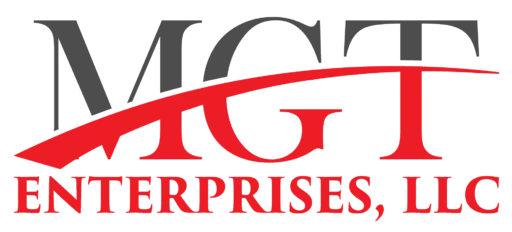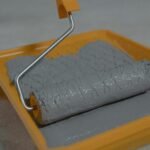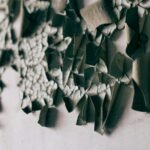When asked about the most common and costly issues they face, most commercial property managers are likely to point out water damage. This is not without reason, as causes like poor drainage, failing roofs, or leaky pipes all lead to water-damaged walls that not only spoil a building’s aesthetics but can greatly compromise its structural integrity if left unattended.
Skim coating water damage repair has become a highly preferred method for giving walls a new overhaul. In this article, we delve into the process behind the skim coating process, identify when it’s essential, and its role in broader commercial wall restoration strategies.
What Is Skim Coating?
Skim coating is a process where a thin layer of joint compound, also known as mud, is applied over drywall or plaster surfaces to smooth a damaged or uneven wall.
As a technique, skim coating water damage repair normally involves the following:
- Hiding stains or any textural inconsistencies
- Give a uniform finish to blistering or bubbling areas
- Reinforce weakened drywall surfaces
- Prepare the surface for paint or new wall treatments
This method has high utility in commercial settings, where aesthetics and performance are valued by tenants and visitors alike.
Skim Coating for Water Damage: A Step-by-Step Guide
1. Initial Inspection and Prep Work
The damaged area is closely inspected before application. If any loose or crumbling drywall is found, it should be extracted and replaced. The resultant surface is then cleaned and dried, followed by light sanding to ensure it properly adheres.
2. Applying primer
Next comes applying a primer-sealer to prevent future stains from appearing and strengthen the bond between the existing wall and the new compound. This also helps block any lingering odors or microbial presence.
3. Putting the First Coat
A thin layer of joint compound is spread over the wall using a drywall knife or trowel. This first coat helps fill minor depressions and sets the foundation for a level surface.
4. Drying and Finishing Prep
Keep it overnight till it dries up. The wall is then lightly sanded to get rid of imperfections, and dust is wiped off to maintain clean working conditions.
5. Applying the Second Coat & Finishing Touches
For final touches, a second and sometimes third A layer is applied that yields a perfectly flat surface. This is followed by a second round of sanding, after which the wall is ready for painting or installing wallpapers.
What are the Benefits of Choosing Skim Coating Instead of Replacement?
Time, profitability, and inconvenience are the key issues in commercial wall protection. The following is a breakdown of how skim coating water damage repair fulfills these needs:
Budget-friendly: Ripping out and replacing drywall in an entire facility is costly, laborious work. Skim coating often makes it possible to repair rather than replace.
Low-impact: There is less dust, and the demolition work involved in both produces less debris.
Adaptable: Applicable to drywall, plastered walls, or painted surfaces.
Professional-looking finish: Allows a high-end, professional look with commercial-level quality.
Water Damage: What You Need to Know About Its Impact
In commercial buildings, water can infiltrate through multiple ways, like pipe leaks, HVAC condensation, faulty windows, breaches on external walls, or
The signs of damage are clear: worn-out paint, blistering drywall, bubbling surfaces, or stains on walls. As time goes on, moisture can promote the growth of mold and degrade the strength of materials.
That makes quick identification and response a critical necessity. The very first step towards restoration is fixing where the leak comes from and letting the area dry up, which typically involves skim coating as a foundational step.
When to Use Skim Coating?
Versatile though it is, skim coating isn’t necessarily the premier option every time. Consider it when:
- The injury is cosmetic, not structural.
- Mold has been professionally remediated
- A slick surface, finished condition, is desirable
- You are faced with time and budget constraints
Stay away from skim coating if there’s a build-up of ongoing moisture or extensive mold, or if the framing behind it is severely damaged.
Elevating Walls: How Skim Coating Fits into Full Commercial Restoration
A single repair might solve today’s problem, but only a proactive approach to commercial property management can look into the future. As part of a comprehensive commercial wall restoration plan, Skim coating typically includes he following components:
- Detecting moisture and Waterproofing.
- Mold removal. Learn more about the link between moisture control and mold control here
- Consolidation (of the surface)
- Wall surface renewal and aesthetic finishing
When done correctly, it goes beyond covering up damage—it serves as a barrier against future issues.
Tips to Guide Facility Managers and Owners
- Always take into account the source or what’s causing water damage before initiating cosmetic repairs.
- Acquire the services of contractors well-experienced in commercial settings. If you’re working under strict timelines, learn how fast-track skim coating helps meet tight commercial construction deadlines without compromising quality.
- Opt for low-VOC compounds and paints for high indoor air quality.
- Plan a schedule that causes minimal tenant disruption, preferably weekend or off-hour scheduling.
Check out this moisture control guide for commercial construction from the EPA.
Choosing the Right Contractor for Skim Coating Projects
Not all contractors are equally equipped to handle commercial skim coating jobs. Professionals who specialize in water damage repair can better understand the demands of working in active commercial spaces.
Moreover, they should be licensed, insured, and well-versed in local building codes. Check references from previous commercial customers, and ask for a clear scope of work prior to hiring. Selecting the appropriate partner allows your commercial wall restoration to be a success, remain within budget, and meet long-term performance specifications.
Final Thoughts
Water damage is something over which you have little control throughout a building’s life, but how you respond to it can be a make-or-break factor. Leveraging the right techniques like skim coating water damage repair, you can restore your wall’s original finish quickly and cost-effectively.
Property managers who aim for lasting quality and tenant satisfaction will find commercial wall restoration to be a one-of-a-kind solution. It doesn’t merely fix repairs but future-proofs your asset






